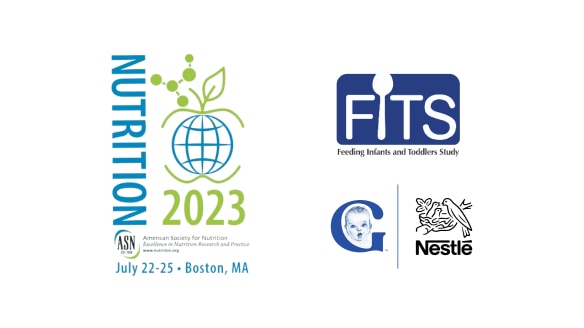Rice Intake Among Infants 6-11.9 months
2 min read • By: Susan Pac, MS, RDN1, Joel Hampton, MS2, Cheryl Callen, MS1
1Gerber Products Company Nestle Nutrition2Research Triangle Institute International

Quick summary
The FDA Closer to Zero Action Plan aims to reduce toxic element exposure in foods for infants and young children, with a focus on inorganic arsenic in rice. The study found that older infants consume rice from a variety of foods, and to minimize inorganic arsenic exposure infants should be offered foods made from a variety of grains.
Background
The FDA Closer to Zero Action Plan aims to reduce exposure to toxic elements from foods eaten by infants and young children.
Dietary exposures to support action levels requires detailed dietary intake information. Rice can be a source of inorganic arsenic.
Methods
FITS is the largest nationwide cross sectional survey focused on dietary intakes and feeding practices of children under four years.
Rice grain consumption among consumers and distribution of grams of rice grain consumed was determined for select rice containing food groups using one day intakes for infants 6 11.9 months (n=902) collected by trained interviewers using multi pass 24 hour recalls.
Results
| Distribution of rice grain intake (g/day) | ||||||||||
|---|---|---|---|---|---|---|---|---|---|---|
| Grams from Rice Type Ages 6-11.9 months (n=902) | Percent Consuming %±SE |
Mean | SE | 5th | 10th | 25th | Median | 75th | 90th | 95th |
| Overall | 58.2±2.1 | 11.9 | 0.8 | 0.4 | 0.7 | 1.9 | 7.0 | 15.96 | 28.2 | 37.1 |
| Cereal | 28.5±1.9 | 16.8 | 1.2 | 1.4 | 3.0 | 7.1 | 12.7 | 20.1 | 34.3 | 51.2 |
| Infant cereal containing rice | 27.9±1 | 17.0 | 1.2 | 1.5 | 3.1 | 7.1 | 12.7 | 20.2 | 34.4 | 51.2 |
| Non-infant rice-containing cereals | <1 | |||||||||
| Snacks | 32.1±2 | 2.0 | 0.2 | 0.2 | 0.3 | 0.6 | 1.1 | 2.2 | 6.1 | 6.7 |
| Baby puffed rice snacks | 6.3±1.1 | 3.1 | 0.5 | 0.4 | 0.4 | 0.9 | 1.7 | 5.0 | 6.6 | 7.7 |
| Baby puffed snacks containing some rice | 24±1.8 | 1.3 | 0.1 | 0.2 | 0.3 | 0.4 | 0.7 | 1.57 | 2.7 | 4.4 |
| Baby rice rusks and teethers | 2.5±0.6 | 3.8 | 0.6 | 0.7 | 0.8 | 1.5 | 2.9 | 5.9 | 6.1 | 6.1 |
| Rice cakes | 0.6±0.3 | |||||||||
| Mixed dishes | 11.9±1.4 | 7.3 | 0.4 | 1.9 | 3.0 | 5.1 | 6.0 | 8.5 | 12.3 | 13.6 |
| Baby food purees with rice | 11.1±1.3 | 6.9 | 0.4 | 1.9 | 3.0 | 5.1 | 6.0 | 8.5 | 12.0 | 13.5 |
| Non-infant mixed dishes with rice | 0.9±0.3 | |||||||||
| Cooked rice | 7.7±1.2 | 8.2 | 1.4 | 0.2 | 0.5 | 1.2 | 4.4 | 11.8 | 20.0 | 25.5 |
1Distribution of rice grain per day are only shown for foods with n>25 respondents consuming.
Conclusion
Older infants consume rice from a variety of foods.
Rice containing snacks do not provide a high level of rice to the diet.
To reduce exposure to inorganic arsenic, infants should be offered foods made from a variety of grains.



